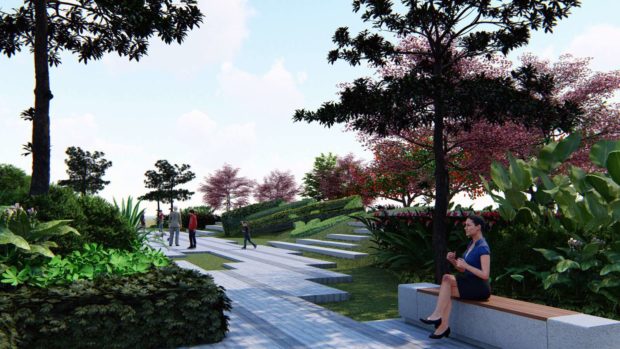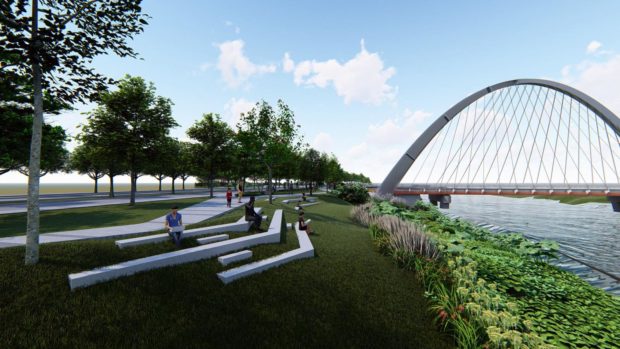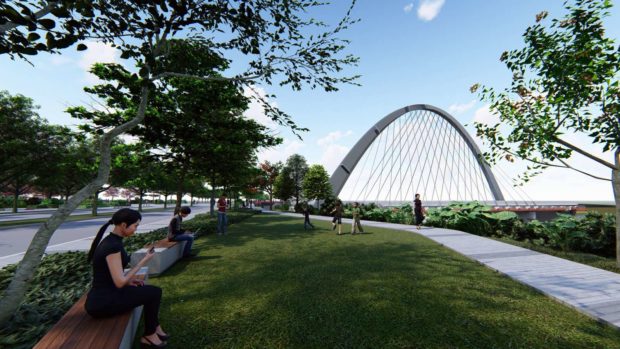A Green and Urban Life in the Metro
The Parklinks Estate developed by LT Group, Inc. and Ayala Land will make open spaces accessible to everyone—by allocating 50 percent of its 35-hectare estate to green parks and spaces.
Open and green spaces are now luxuries in the urban landscape. To be surrounded by greenery in the city is a welcome sight, proven to have calming effects on city dwellers. We are, after all, creatures of nature craving constant connection to our roots.
This is also the reason why most skyscrapers, residential projects, and even government infrastructures are moving towards an eco-inclusive approach towards building, one that puts nature in conjunction with development.
It is the future of architecture and city planning: integrated living and commercial spaces that honor existing natural features of land and water while also working towards providing greenery. Building resilient and sustainable structures is not only beneficial to people inhabiting these areas but also responsive to the challenge of climate change mitigation.
Largest urban green estate in the North
There are few real estate developers that strike a balance between modernization while also keeping in mind the human need for spaces to convene, unwind, and be in touch with nature.
An upcoming 35-hectare development called the Parklinks is bringing to life a conscious and green space-oriented mixed-use estate.

Property developers LT Group, Inc. (LTG) and Ayala Land, Inc. (ALI) deem it its greenest development yet, and for good reason. The estate that covers Pasig and Quezon City has allocated almost half of its land area to open spaces.
“With 50 percent of the 35 hectares devoted to open spaces, Parklinks will provide what is missing along the busy C5 corridor—an abundance of open space,” ALI SVP and Strategic Landbank Management Group Head Robert S. Lao said.
This is a bold move previously unheard of in the local real estate industry and a welcome development as green and open spaces in Metro Manila are a rare sight. In 2019, the Department of Environment and Natural Resources estimated that of the National
Capital Region’s total land area of 55,922 hectares, only 12,152 hectares, or 21 percent are green spaces.
A three-hectare central park shaded by large trees and surrounded by carefully landscaped gardens is the main attraction at Parklinks’ range of green and open spaces. But throughout the estate, there are also a series of parks, an esplanade, a river terrace, running and biking trails, and riparian gardens designed to highlight the natural topography of the land.
The location itself is primed for pedestrian-centric features. Said open spaces are designed to only be 250 meters away from any point in the estate which translates to a mere 5-minute walk for residents, office workers, and the public from the nearby mall, offices, and living spaces through a well-designed and managed walkway system that encourages alternative modes of movement.
Built for interconnectivity
Alongside living in proximity to nature, having a calming and serene view of the water is proven to ease the mind. It’s no coincidence that Parklinks was built east-side and so close to a key body of water: The Marikina River.
Parklinks furthers its mission to make not just a green development but to build an allied structure that would aid in decongesting the city’s worsening traffic condition. As we all know, this issue has long dissuaded future homeowners from committing to urbanized centers as possible residential addresses.

As it is now, Parklinks is accessible via C5, Amang Rodriguez Avenue, and Ortigas Avenue. Existing residential developments as well as educational institutions such as the University of the Philippines Diliman, Ateneo de Manila University, University of Asia and the Pacific, and Saint Pedro Poveda College are reachable within a few minutes as these are within Parklinks’ six-kilometer radius. Additional linkages to the estate’s neighboring communities like Circulo Verde and Metropoli will also be established in the future to make community building and connecting with other residents a seamless experience.
But perhaps Parklinks’ greater contribution to urban mobility is its construction of a 110-meter long and 25-meter wide bridge that will link Quezon City and Pasig over the Marikina River’s stretch on this side of Pasig.
True to its commitment to moving people, the bridge will not only accommodate cars to help ease vehicular traffic in the northeast and east of Metro Manila. It will also allow for other forms of mobility as the bridge will have dedicated lanes for bikers and pedestrians.
The bridge is also a sight to behold with its 40-meter high arch design that lights up at night, adding to the overall aesthetic of the development.
Parklinks is a testament to LTG and ALI’s shared vision and commitment in providing sustainable communities in urban centers to its customers.
A holistic development mix
Parklinks is the result of a 50-50 joint venture development between LTG and ALI. Dubbed as the largest mixed-used development along the C5 corridor, it leverages each stakeholder’s expertise especially in developing various estates in the country. The two developers are after all household names in the real estate business.
Both developers have created a balance of residential, commercial and leisure developments. For Parklinks, it will add a third dimension, stirring it towards a new way of building that will likely be the standard in the future: green and sustainable development.

Still, ALI and LTG are steadfast in their commitment to building not just livable spaces but also modernized business districts. A P53 billion allocation has been committed by both parties in the next 10 years for Parklink’s initial development.
First in this lineup of developments is a regional mall along C5, which will feature a 52,000-square-meter gross leasable area for retail, dining, and entertainment. On top of the mall will be an office development, too.
Where nature meets the modern city
The C5 corridor’s potential is only beginning to unfold in the past few years. Few developers dared venture on this side albeit being the perfect gateway to NCR city centers and the south. But with the government’s push, most notably with the completion of the 15.56-kilometer Metro Rail Transit Line 4 (MRT-4) that will interconnect cities in the east in 2028, C5’s new-found viability has since attracted future developments.
ALI’s flagship residential brands Ayala Land Premier and Alveo are one step ahead and are likewise to find new grounds in previously untapped C5 area, starting with the introduction of new residential towers and a residential complex.

Ayala Land Premier’s first luxury residential development along C5 is slated for this year. Alveo will also begin its initial offerings with five residential towers that will rise next year.
These upcoming residential projects are expected to make Parklinks an even more robust option for families and homeowners looking to live a life on this side of the metro without losing touch with nature.
With precedent-setting developments like Parklinks, the future of residential development in the metro is one where wide-open green spaces are made in harmony with livable spaces. This acknowledges that more than just shelters, we humans need these third spaces for reasons integral to becoming full beings: community building, forging human connections, and returning to our roots in nature.
ADVT
Follow INQUIRER.net on Facebook.














